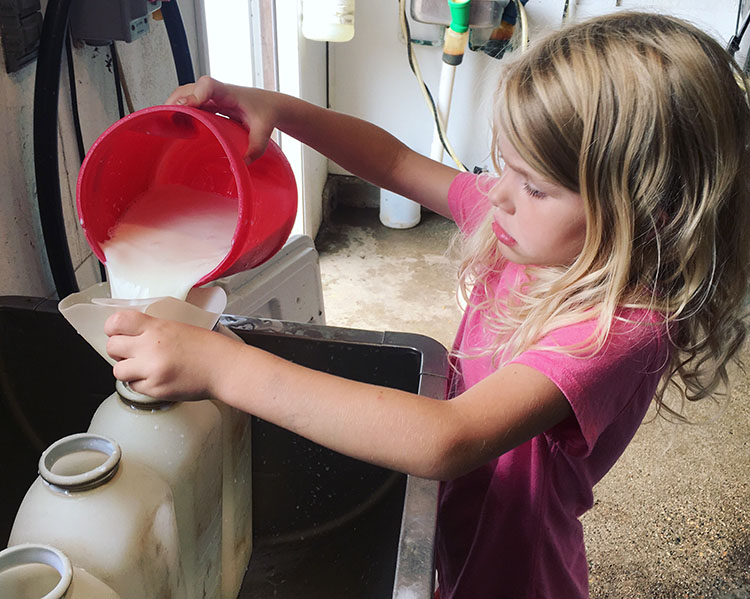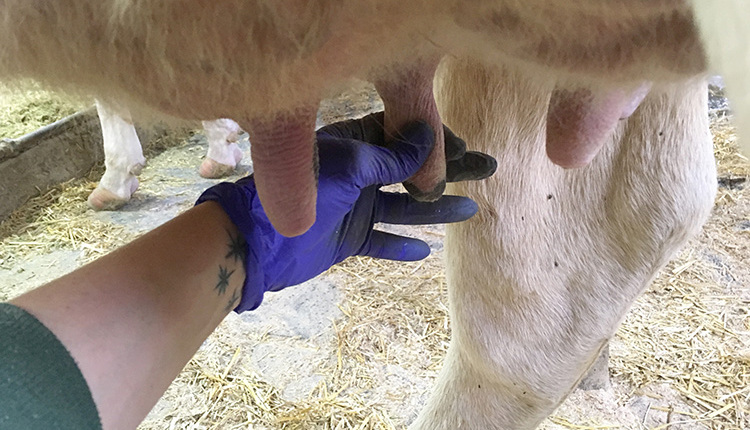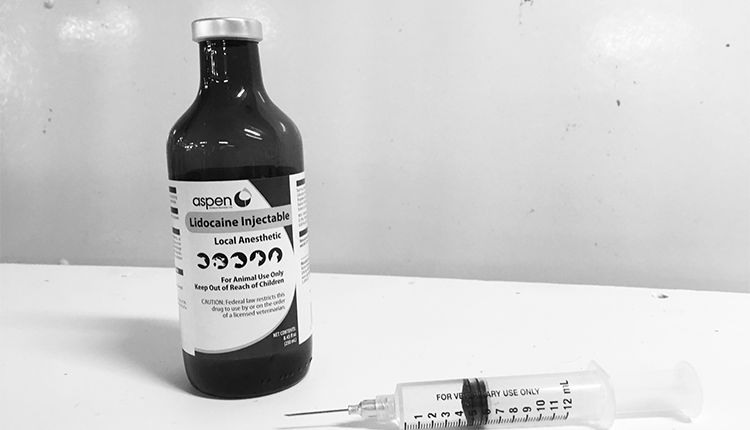
I took this picture a couple of weeks before school started because I wanted to remember moments like these with my littlest helper. I knew these precious moments farming together would be fewer once she started kindergarten.
As I look back at this picture now, I see so much more than my little blondie filling calf bottles.
I see the mantra that plays in an endless loop inside my head: “Let them help.”
Our kids have always been with us in the barn, but sometimes I struggle with letting them help me with my chores. Take feeding calves, for example. When Daphne, my youngest, helps fill bottles, the job takes twice as much time, and there’s a lot of spilled milk.
But, in the big picture of life, spilled milk isn’t nearly as important as the lessons she’s learning.
Work ethic isn’t a switch you can suddenly flip on when you decide your kids are old enough for a real job. Responsibility and compassion, the other two values that flow through dairy farmers’ veins, cannot be switched on, either. These values grow in children as they work alongside us.
I look at this picture and I’m reminded of the adaptability that has become a cornerstone of our farm’s success.
We installed an automatic calf feeder before Daphne was part of our family.
In all honesty, Daphne may not have become part of our family had we not switched to automatic calf feeding and group housing. My husband and I always wanted a handful of children, but I wasn’t sure I could handle three small children and all of my farm chores.
When we got the calf feeder, I lamented the fact we were automating yet another chore suitable for small hands to help with. With so many jobs on dairy farms becoming automated or mechanized, there are fewer opportunities for children to grow their work ethic, responsibility, and compassion.
The nostalgic part of me worried that our children would never learn to feed calves the old-fashioned way and would thus not appreciate the technology of the automatic feeder.
It turns out, there was no need for me to worry.
We outgrew the space available in our group pens within a couple years. We now raise our calves in both group pens and individual hutches. This hybrid system actually works better than either system did alone, but that’s a story for another post.
Most importantly, our system provides a variety of experiences for all three of our children — everything from monitoring calves on the automatic feeder to filling bottles.

The author is a dairy farmer and writer from central Minnesota. She farms with her husband, Glen, and their three children. Sadie grew up on a dairy farm in northern Minnesota and graduated from the University of Minnesota with a degree in agricultural communications and marketing. She also blogs at Dairy Good Life.








